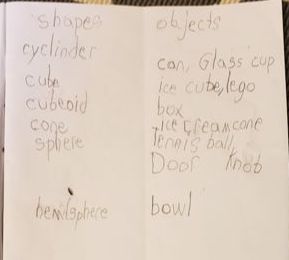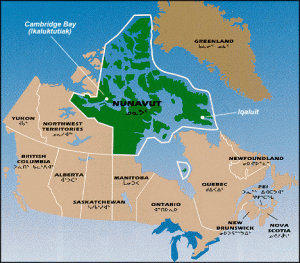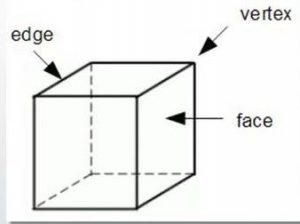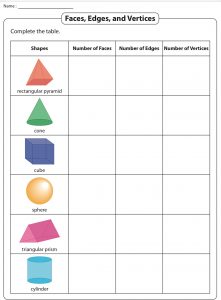Press the play button if you would like to listen to this post. If you can’t hear it, click here.
Hello Everyone,
Last week we were introduced to several 3D shapes which are also known as geometric solids. We then went on a search in our home to find objects that resemble these shapes. Luke sent in his results:

As we can see, geometric solids are everywhere. They make up many of the small items in our home. They also form large structures such as furniture, appliances, walls and even buildings themselves!
Each geometric solid has several qualities that make it unique. This includes:
- The number and shape of its faces. Faces are the flat surfaces.
- The number of edges. An edge is where two faces meet.
- The number of vertices. A vertex is a corner of a shape. It is also the location of where two edges meet.
These terms were touched upon last week, however, let’s watch the following video to review.
Now that we have seen some examples, let’s try counting the number of faces, edges and vertices ourselves. Use the following online tools to explore and play with several 3D shapes. As you look at each tool, see if you can identify the following shapes and their properties:
- rectangular pyramid
- cone
- cube
- sphere
- triangular prism
- cylinder
Record this chart into your response booklet. You do not need to draw the shape. Simply, write down the name.
Have fun exploring!
https://www.mathsisfun.com/geometry/common-3d-shapes.html
https://www.learner.org/wp-content/interactive/geometry/prisms/
https://www.learner.org/wp-content/interactive/geometry/pyramids/
https://www.nctm.org/Classroom-Resources/Illuminations/Interactives/Geometric-Solids/
Virtual Field Trip
On our last virtual field trip we explored the beautiful landscape of coastal British Columbia. This week I would like to take you to a different part of Canada. Today we will travel far north, to a place called Iqaluit. Iqaluit is the capital city of the territory, Nunavut.

It is located on a remote island and is the only Canadian capital city that is not connected to the rest of the country by roads. In fact, when the water is frozen over, the only way to access the city is by plane! Because of its remote location, Iqaluit does not get many visitors. Google Treks, however, has helped one local bring a piece of Nunavut into our homes. Join me as Christopher Kalluk welcomes us into his community and shows how he is helping to create street views for Google.
We will continue our field trip by visiting the Google Trek page. Though it has stunning footage, it is only a starting point. Please be sure to visit the additional links to see more views and landscapes of Iqaluit. Some important landmarks you might find are:
- The Unikkaarivik Vistors Center
- The most northern Tim Hortons in Canada
- The Iqaluit museum
- The Nunavut Legislative Assembly
- The Hudson Bay building
- The local elementary and high school
- The “Four Corners”, four-way stop in downtown Iqaluit
Enjoy your journey!
Google Trek: Iqaluit
https://www.google.com/maps/about/behind-the-scenes/streetview/treks/canadian-arctic/
Explore More of Iqaluit
https://canada.googleblog.com/2013/07/happy-nunavut-day-snowy-iqaluit-comes.html
http://findingtruenorth.ca/blog/google-street-view-iqaluit
When you are done, answer the following questions in your response booklet:
- What did you see on your field trip? Describe the landscape and the landmarks that you spent time visiting.
- Is this a place that you would like to visit? Explain why or why not?
- How does the environment in Iqaluit compare to coastal British Columbia? What makes it unique?
Complete the activity by illustrating the most memorable part of this virtual adventure.
I look forward to your responses!


